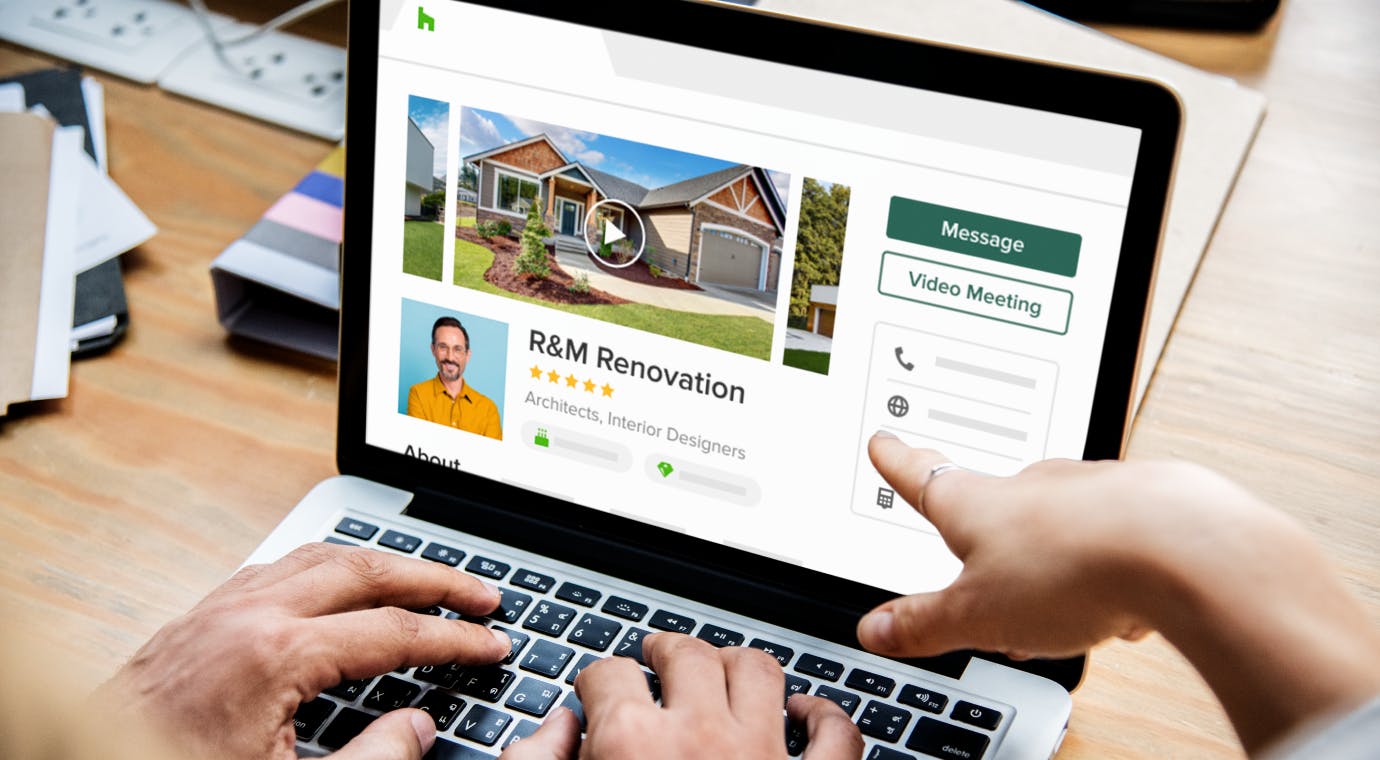Manage High Demand While Maintaining Business Growth – Pros Share Their Strategies
Minimise stress while maximising your company’s potential with these tried-and-true ideas

Running a design or construction business means endlessly juggling any number of tasks: visiting sites, managing clients, balancing the books, finding suppliers and subcontractors, and much more. And while high demand is great for the bottom line, it can make that juggling feel frenetic. In this article, the first in our series about managing a business during times of high demand, 14 renovation and design professionals share their insights and advice on how to minimise stress while maximising business potential.

Manage Client Expectations and Communicate Effectively
A disappointed homeowner brings stress and strain to the client-pro relationship, and requires work to resolve the conflict. So how do you manage client expectations from the start? One word: communication.
Beth Clarke, president of the Portland, Oregon, chapter of the Interior Design Society in the US, says it’s “all about communication.” Over time, she has learned that she needs to be in regular contact with her clients, “even if it’s just to say everything is on track and there’s nothing new to report. When I don’t take the time to communicate, it almost always leads to problems,” she says.
It’s easy to get excited about a project, but Hennie Schoeman of Schoeman Construction, advises creating realistic expectations from the start and not making promises you can’t keep. “Do what you say you will do and show up when you say you will” is his simple motto for keeping expectations on par.

Separate Your Work Life and Personal Life
So many pros end up working after hours, taking client calls late at night and on weekends. But blurred lines can have a huge impact on your work-life balance.
Clarke creates clear boundaries by not answering texts or phone calls outside of business hours. “If I don’t respond, they can’t continue the conversation,” she says. It might be helpful to keep in mind that a client who texts or calls after hours might not be expecting an immediate response. “I understand that sometimes those texts or calls are made not necessarily to have me drop everything to answer at that moment,” Clarke says. “They can be my client’s way of getting another item off their to-do list. Knowing this also makes it easy to wait and respond on the next business day.” Designer Laura Grist, makes it known that “there is no such thing as a design emergency,” reassuring clients that everything will work out in the end.
By keeping to typical work hours from the get-go and not contacting your clients outside of this time frame yourself, you’ll build fair, realistic boundaries. And in fact, it’s actually imperative for your mental health to do so. Laura Irion of Laura Design Co. knows it can be hard, “especially when your office is one step from your kitchen,” she says. But both Irion and her teammate, Laura Peacock, who’ve worked from home from the very beginning, consciously set clear boundaries. “We only send emails between 8am and 5pm, and we don’t work on Sundays,” Irion says. “From day one, that was just a very hard and fast rule that we’ve stuck to.” Martha Fecteau of Fairfax Design Solutions adds, “I physically shut my home office door at 5pm, so that it’s the equivalent of saying, ‘The office is closed now.’”
Similarly, Ginger Curtis of Urbanology Designs has implemented a hard stop at 4:30 pm for herself and her entire team. “It wasn’t always like this in the early days,” she says. “I thought burning the candle at both ends would get me ahead. It only proved to exhaust me mentally, emotionally and physically. Now I also have strong policies in place, making sure I have time each night to prepare and eat dinner with my family.”
Designer Will Guenther, does often work weekends. “But [I] only put in about four, maybe five, hours when working on the weekend,” he says. “I do take breaks to spend time with the family and dog. I try to go for a walk or take short trips.”
Irion says the earlier you set up these boundaries, the better it is for your client relationships. “Our welcome packet says, ‘This is when we respond, and please don’t text us. In love, of course, but please don’t text us,’” she says.

Manage Project and Labour Costs Wisely
Managing project costs requires understanding budget constraints from the start and working within those parameters. Having multiple go-to suppliers at a variety of price points is also a good idea.
Managing labour costs is trickier, since you don’t have any control over them. Clarke says communication is crucial to helping keep labour costs from soaring. “When I don’t give a contractor all the information they need, it will take more time for them to do the work,” she says. “And we all know time is money.”
Deana Duffek of Duffek Design & Development says Houzz Pro frees up time by digitising what was formerly paperwork. “The more you streamline and make these processes more efficient and automated, the less time you’re having to stay at the office late and work through accounting issues, invoicing and so on,” she says. Any automation helps you get time back.

Guard Your Cash Flow
In design school you’re taught not to buy products for clients before they’ve paid. The same goes for construction pros. Wait until your clients have paid before you buy or start anything. Clients are notorious for changing their minds or asking for alterations. Clarke says she has had to delay projects until the money was in her account, “but I’d rather do that than run the risk of taking a financial hit.” Be sure to treat clients’ payments as the only certified “go-ahead.”
Remember, delaying a project is better than forking out your own money to start it. Lean on Houzz Pro tools to help clients review and approve any proposals or estimates before you embark on any project.

Choose Clients Selectively
Not every lead who contacts you is worth your time. Learn how to politely decline offers or refer leads to another professional who may be a better fit. “Not every lead you get is necessarily a customer you want,” says Robert Littlejohn of Interiors Unlimited. “I’ve been around the block enough to know that.” He says he has learned not to accept every project, as it’s not always worth the money. Sometimes your time really is worth more.

Find the Right People to Work With
If you’re a one-person show, you’re probably outsourcing some work to specialist contractors or suppliers. Make sure the people you work with are trustworthy and reliable, and that they don’t add stress. Clarke recommends doing your homework: “Don’t be afraid to ask contractors as many questions as it takes to know if the relationship will work.”
Irion notes how important relationships with product and service providers are: “If we didn't have good relationships with vendors,” she says, “we couldn’t sell anything to our clients, so it’s very, very crucial for business.”
But finding the right people to help should minimise your workload and free up your time. Especially if you add a full-time employee to your team. Ruben Gutierrez of Errez Design, credits his team with keeping him focused and on task. “Together we outline our projects, deadlines and deliverables early on in order to determine when and how we will complete them,” he says. Irion has also brought in another team member. “We have a design assistant now, and she’s saving our lives on a daily basis,” she says. When working together, you get to share the workload and the victories as a team.
To minimise working on the go, Grist has trusted teammates working in the office and on different projects. “I rely on their good instincts, and also to know when to contact me or when to handle it on their own,” she says.
Even if hiring people is outside of your budget, you can use the ideas below to minimise stress and avoid burnout.

Be Smart About Your Time
Running between sites. Lugging around samples. Eating lunch in your car. How can you minimise the stress of constantly working on the go? The trick is to schedule downtime and not overbook your day. And to find whatever schedule works for you.
Clarke, for example, separates client appointments and showroom work to create a buffer of nonclient time when her brain can recharge. Curtis sets up regular times to check in with her team and keep them from feeling overwhelmed. “I find it challenging if I let too much time go by before checking in,” she says.
Phil Shearon of Shearon Design Collective takes advantage of technology. “Because we are constantly working from our homes, client homes, offices, coffee shops and even from the side of a mountain for a new construction home, we’re frequently using mobile tech,” he says. Shearon’s team uses the Houzz Pro app for all communications. “The templates save me so much time in typing up responses and especially save time when I’m out in the field or in between appointments,” he says.
Gabrielle Lowrie of Bandd Design, finds that staggering her email correspondence frees up time. “Whether that means opening them to review and telling the client I’ll be in touch later, it makes such a big difference instead of trying to catch up on a million things at once,” she says. “And of course, having the Houzz Pro app and my Dropbox on my phone helps!”
Fecteau says keeping her phone nearby at all times helps her stay on track each day, but that she never takes calls or returns emails while she’s at another client’s home. “I actually silence my phone until I’m back in my car,” she says.

Help Clients Find You Online
Clients, including those from referrals, are a key component to any business. Historically, recommendations travelled by word of mouth and were more time-consuming to lockdown. But nowadays most people search the web for designers or contractors who work in their area. And of course you want them to come across your website or online profile and take full notice of the positive reviews you’ve received. Which means that online solutions like Houzz Pro are essential for marketing.
One timesaving solution: Make sure your online presence is great, so that your stellar reviews from happy clients do the legwork for you. Natasha Burton of NB Interiors UK in Suffolk, says she gets many passive leads through Houzz: “I’ve had so many clients coming to me because of the amount of reviews I’ve received online.” Fecteau, says Houzz Pro has been a “massive timesaver” for her, adding: “It’s so efficient, and the reminders it sends out are great!”
Make sure you’re taking full advantage of digital solutions to ease your search for new leads and stay organised.

Find What Works for You
Home design and improvement naturally involves a lot of personal time, creativity and passion – but with planning, the right project and client management tools and the right mindset, you can integrate your work and personal lives harmoniously, as Gutierrez does: “They seem to complement and support each other,” he says.
But of course, everyone has different strategies and needs. And that’s the point – to find the right system and balance for you.


